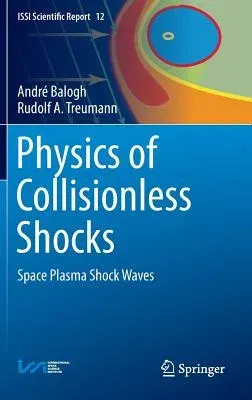André Balogh
(Author)Physics of Collisionless Shocks: Space Plasma Shock Waves (2013)Hardcover - 2013, 3 January 2013

Qty
1
Turbo
Ships in 2 - 3 days
In Stock
Free Delivery
Cash on Delivery
15 Days
Free Returns
Secure Checkout

Part of Series
Issi Scientific Report
Print Length
500 pages
Language
English
Publisher
Springer
Date Published
3 Jan 2013
ISBN-10
1461460980
ISBN-13
9781461460985
Description
Product Details
Authors:
Book Edition:
2013
Book Format:
Hardcover
Country of Origin:
NL
Date Published:
3 January 2013
Dimensions:
23.62 x
16 x
3.3 cm
ISBN-10:
1461460980
ISBN-13:
9781461460985
Language:
English
Location:
New York, NY
Pages:
500
Publisher:
Series:
Weight:
839.15 gm